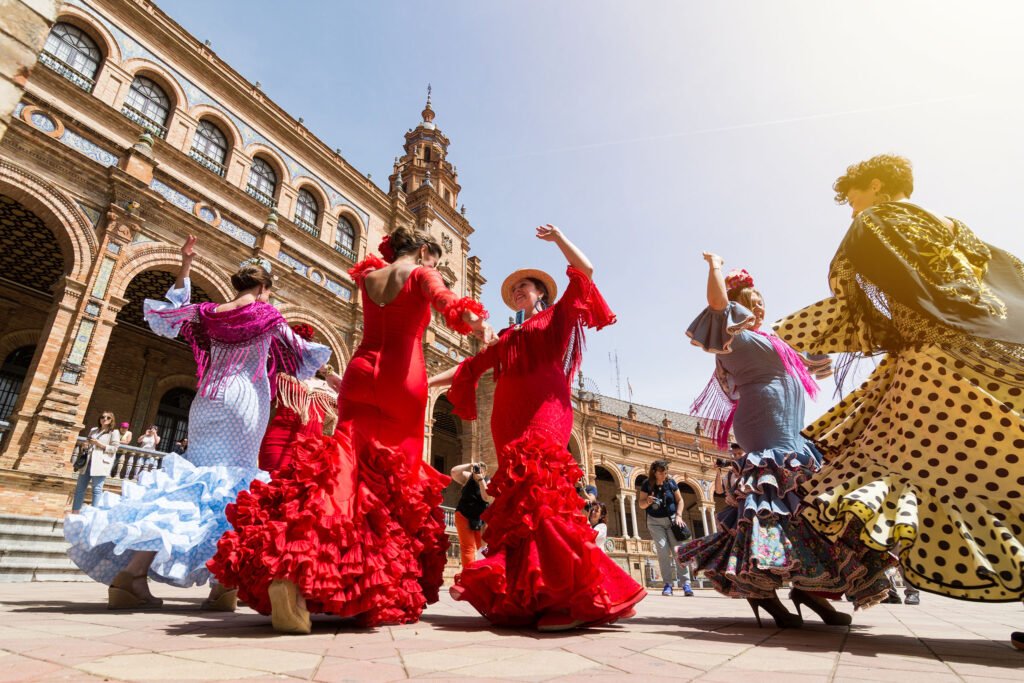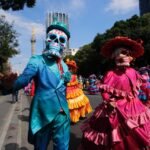Spain: A Tapestry of History and Culture
Introduction:
Spain, officially known as the Kingdom of Spain, is a country located in Southwestern Europe, occupying most of the Iberian Peninsula. It shares borders with Portugal to the west, France and Andorra to the northeast, and Gibraltar to the south. The country also includes the Balearic Islands in the Mediterranean Sea, the Canary Islands in the Atlantic Ocean, and the autonomous cities of Ceuta and Melilla in North Africa. The capital city is Madrid, which is also the largest city and a major cultural and economic hub.
Spain’s geography is diverse, featuring mountains, plateaus, and a long coastline that boasts beautiful beaches. The climate varies from temperate in the north to Mediterranean in the south, providing an ideal environment for agriculture, tourism, and outdoor activities.
Economically, Spain is one of the world’s largest economies and a significant player in the European Union. It is known for its robust tourism industry, agricultural products, and industrial base. The country uses the euro (EUR) as its currency. Spain is renowned for its automotive, fashion, and food industries, with brands like SEAT, Zara, and Rioja wine being globally recognized.
Culturally, Spain has a rich heritage that has significantly influenced art, literature, music, and cuisine worldwide. Spanish culture is characterized by its contributions to architecture, painting, flamenco music, and its vibrant festivals. The country is home to numerous UNESCO World Heritage Sites, reflecting its historical and cultural significance. Spanish is the official language, and Roman Catholicism is the predominant religion.
Spain’s history is marked by its role as a major European power during the Age of Exploration, its influence in the Americas, and its periods of conflict and civil war. The country’s historical legacy is evident in its ancient ruins, medieval castles, and cultural traditions.
Politically, Spain is a parliamentary constitutional monarchy. The King is the head of state, while the Prime Minister is the head of government. Spain is an influential member of various international organizations, including the United Nations, NATO, the European Union, and the G20.
Tourism in Spain is a major industry, attracting millions of visitors each year to its historical landmarks, stunning landscapes, and vibrant cities. Popular destinations include Barcelona, Seville, Valencia, and the Costa del Sol. Spain’s culinary traditions, artistic heritage, and scenic beauty make it a top destination for travelers.
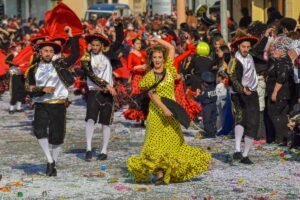
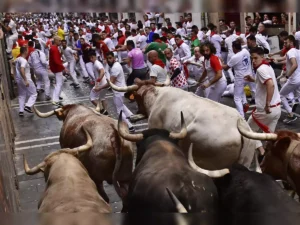
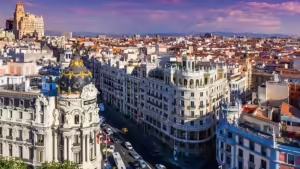
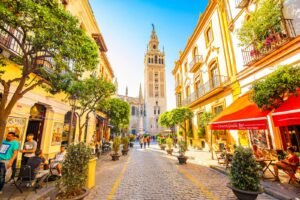
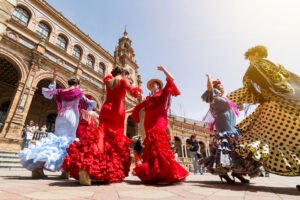
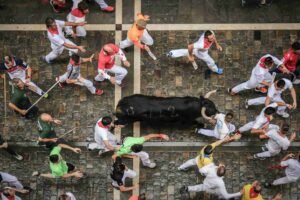
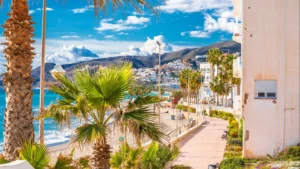
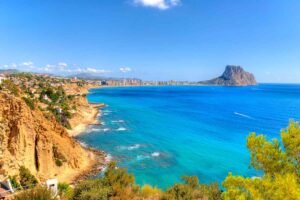
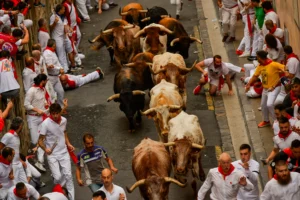
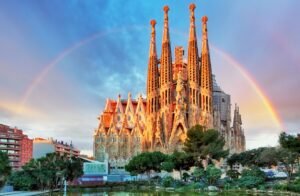


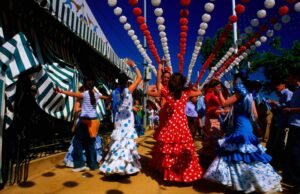
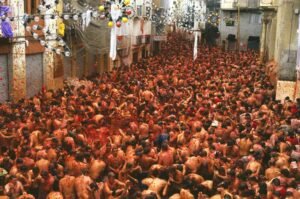
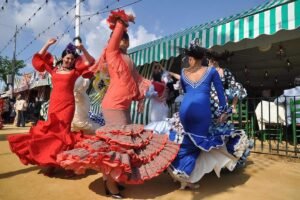
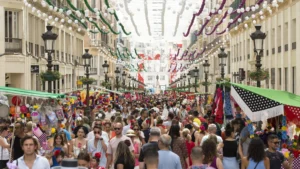
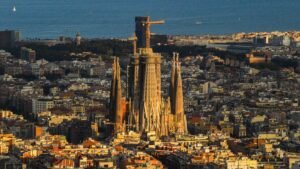
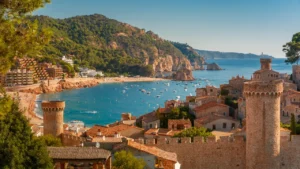



110 Facts About Spain (2024)
Basic Information
| Category | Details |
|---|---|
| 1. Current Name | Spain |
| 2. National Name | Reino de España (Kingdom of Spain) |
| 3. Former Names | Hispania, Iberia |
| 4. Date of Establishment | December 6, 1978 (current constitution) |
| 5. Date of Independence | Not applicable (continuous existence) |
| 6. Leadership | King: Felipe VI, Prime Minister: Pedro Sánchez |
| 7. Government Type | Parliamentary constitutional monarchy |
Geography
| Category | Details |
|---|---|
| 8. Capital City | Madrid |
| 9. Important Cities | Barcelona, Valencia, Seville, Bilbao, Málaga |
| 10. Land Area | 505,992 square kilometers |
| 11. Total Area | 505,992 square kilometers |
| 12. Neighboring Countries (Land) | Portugal, France, Andorra, Gibraltar |
| 13. Neighboring Countries (Sea) | Morocco |
| 14. UNESCO World Heritage Sites | Alhambra, Sagrada Familia, Prado Museum (48 sites) |
| 15. UNESCO World Natural Sites | Teide National Park |
| 16. Climate | Temperate in the north, Mediterranean in the south |
| 17. Biodiversity | Diverse flora and fauna, including the Iberian lynx and Spanish imperial eagle |
| 18. Famous River | Ebro River |
| 19. Famous Mountain | Mount Teide |
| 20. Coastline Length | 4,964 kilometers |
| 21. Major Islands | Balearic Islands, Canary Islands |
| 22. Longest River | Ebro River |
| 23. Highest Waterfall | Cola de Caballo |
| 24. Largest Lake | Lake Sanabria |
| 25. Largest Forest | Garajonay National Park |
Population
| Category | Details |
|---|---|
| 26. Population (2024) | Approximately 47 million |
| 27. Population (1950) | 28 million |
| 28. Population (1900) | 18 million |
| 29. Projected Population (2070) | 50 million |
| 30. Population Density | 93 people per square kilometer |
| 31. Urban Population (%) | 80% |
| 32. Rural Population (%) | 20% |
Demographics
| Category | Details |
|---|---|
| 33. Ethnicity/Race | Spanish (majority), Catalan, Basque, Galician, others |
| 34. Languages | Spanish (official), Catalan, Basque, Galician |
| 35. National Language | Spanish |
| 36. Religion | Christianity (predominantly Roman Catholic) |
| 37. Median Age | 44.9 years |
| 38. Life Expectancy | 83.6 years |
| 39. Birth Rate | 7.6 births per 1,000 people |
| 40. Death Rate | 9.3 deaths per 1,000 people |
Economic Indicators
| Category | Details |
|---|---|
| 41. Monetary Unit | Euro (EUR) |
| 42. GDP | $1.5 trillion (2022 est.) |
| 43. GDP per Capita (PPP) | $38,600 (2022 est.) |
| 44. Income Level | High income |
| 45. Consumer Price Inflation | 6.3% (2022 est.) |
| 46. Current Account Balance | $18 billion surplus (2022 est.) |
| 47. Exchange Rate (Per $) | 1 USD = 0.92 EUR |
| 48. Unemployment Rate | 13.3% (2022 est.) |
| 49. Stocks Inward ($ billion) | 650 (2022 est.) |
| 50. Real GDP Growth (%) | 5.2% (2022 est.) |
| 51. Labor Force (Million) | 23 million |
| 52. Major Industries | Tourism, automotive, textiles, chemicals, food processing |
| 53. Major Exports | Machinery, vehicles, pharmaceuticals, foodstuffs, clothing |
| 54. Major Imports | Machinery, vehicles, oil, chemicals, foodstuffs |
| 55. Public Debt (% of GDP) | 118.4% (2022 est.) |
| 56. Tax Revenue (% of GDP) | 36.7% (2022 est.) |
| 57. Minimum Wage | €1,126 per month |
| 58. Average Household Income | $30,000 per year |
| 59. Inflation Rate | 6.3% (2022) |
| 60. Interest Rate | 0.0% (2022) |
| 61. Major Trade Partners | Germany, France, Italy, Portugal, United Kingdom |
Social Indicators
| Category | Details |
|---|---|
| 62. Literacy Rate | 98.6% |
| 63. Fertility Rate | 1.33 children per woman |
| 64. Infant Mortality Rate | 2.7 per 1,000 live births |
| 65. Under-5 Mortality Rate | 3.1 per 1,000 live births |
| 66. National Holidays | National Day, Christmas, Easter |
| 67. Health Care System | Universal healthcare system |
| 68. Health Expenditure (% of GDP) | 9.0% (2022 est.) |
| 69. Obesity Rate | 23.8% of adults |
| 70. Drinking Water Source | 100% of the population has access to clean drinking water |
| **71 |
. Access to Sanitation** | 100% of the population has access to improved sanitation facilities |
| 72. Average Life Satisfaction | 6.9/10 |
| 73. Major Health Issues | Cardiovascular diseases, cancer, diabetes |
| 74. Smoking Rate | 24.8% of adults |
Culture and Society
| Category | Details |
|---|---|
| 75. Famous People | Pablo Picasso, Salvador Dalí, Antoni Gaudí, Rafael Nadal |
| 76. Legal Marriage Age | 18 years |
| 77. Gender Inequality Index | 0.074 (2021) |
| 78. National Sport | Soccer |
| 79. Sport Achievements | Multiple FIFA World Cup wins, Olympic medals |
| 80. National Animal | Iberian bull |
| 81. National Fruit | Orange |
| 82. Famous Landmarks | Sagrada Familia, Alhambra, Park Güell |
| 83. National Dish | Paella |
| 84. Major Newspapers | El País, El Mundo, ABC |
| 85. Major TV Channels | TVE, Antena 3, Telecinco |
| 86. Popular Music Genres | Flamenco, pop, rock |
| 87. National Theatre | Teatro Real, Madrid |
| 88. National Gallery | Prado Museum, Madrid |
| 89. Popular Festivals | La Tomatina, Running of the Bulls, Feria de Abril |
| 90. Average Internet Speed | 47 Mbps |
| 91. Most Popular TV Show | “La Casa de Papel” |
| 92. Most Popular Book | “Don Quixote” by Miguel de Cervantes |
| 93. Most Popular Sport | Soccer |
| 94. Most Visited Museum | Prado Museum |
| 95. Largest Stadium | Camp Nou, Barcelona |
| 96. National Anthem | “La Marcha Real” |
| 97. Famous Historical Sites | Alhambra, Segovia Aqueduct, Santiago de Compostela |
| 98. Major Brands | Zara, SEAT, Banco Santander |
| 99. Famous Foods | Tapas, churros, gazpacho |
| 100. Famous Drinks | Sangria, Rioja wine, horchata |
Education
| Category | Details |
|---|---|
| 101. Best Public University | University of Barcelona |
| 102. Best Private University | IE University |
| 103. Education Rank | 34th globally |
| 104. School Enrollment Rate | 98% for primary education |
| 105. Average Class Size | 22 students |
| 106. Notable Alumni | Pedro Sánchez, Pablo Iglesias, Amancio Ortega |
| 107. Public Spending on Education | 4.2% of GDP |
| 108. Number of Universities | Over 70 |
| 109. Popular Study Abroad Destinations | United Kingdom, United States, Germany |
| 110. Literacy Programs | Extensive adult literacy programs available |
History
Spain’s history is marked by its role as a major European power during the Age of Exploration, its influence in the Americas, and its periods of conflict and civil war. The country’s historical legacy is evident in its ancient ruins, medieval castles, and cultural traditions.
The Flag of Spain
The national flag of Spain features three horizontal bands of red, yellow, and red, with the national coat of arms on the yellow band.
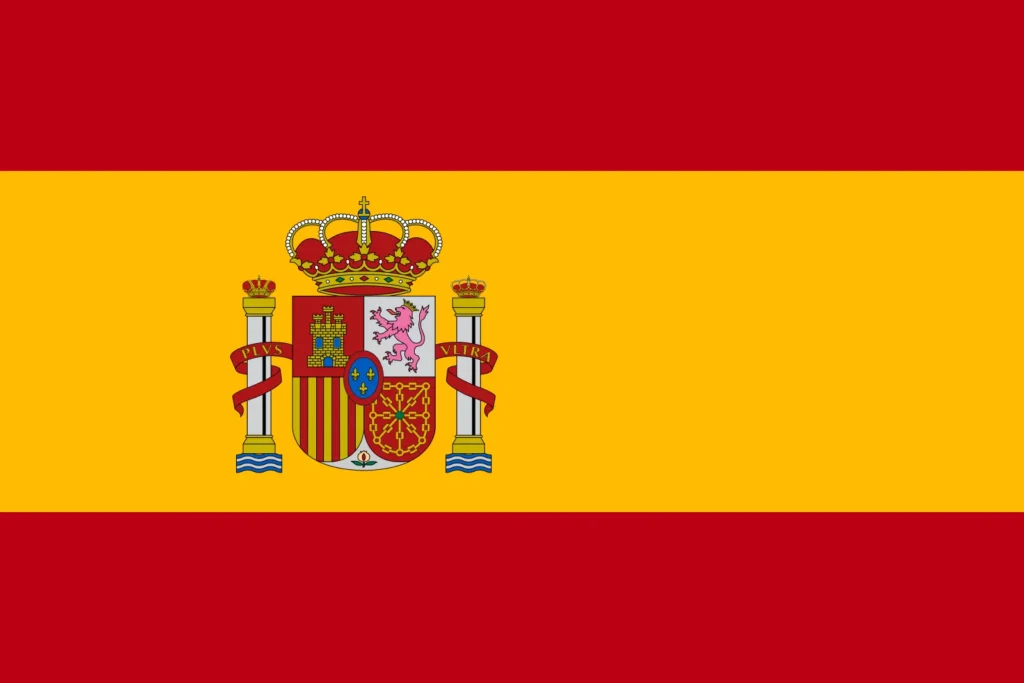
- Red Bands: Represent strength and bravery.
- Yellow Band: Symbolizes generosity and represents the Spanish Empire’s wealth.
The flag symbolizes Spain’s rich history, its strength and bravery, and its commitment to unity and pride in its national identity.
